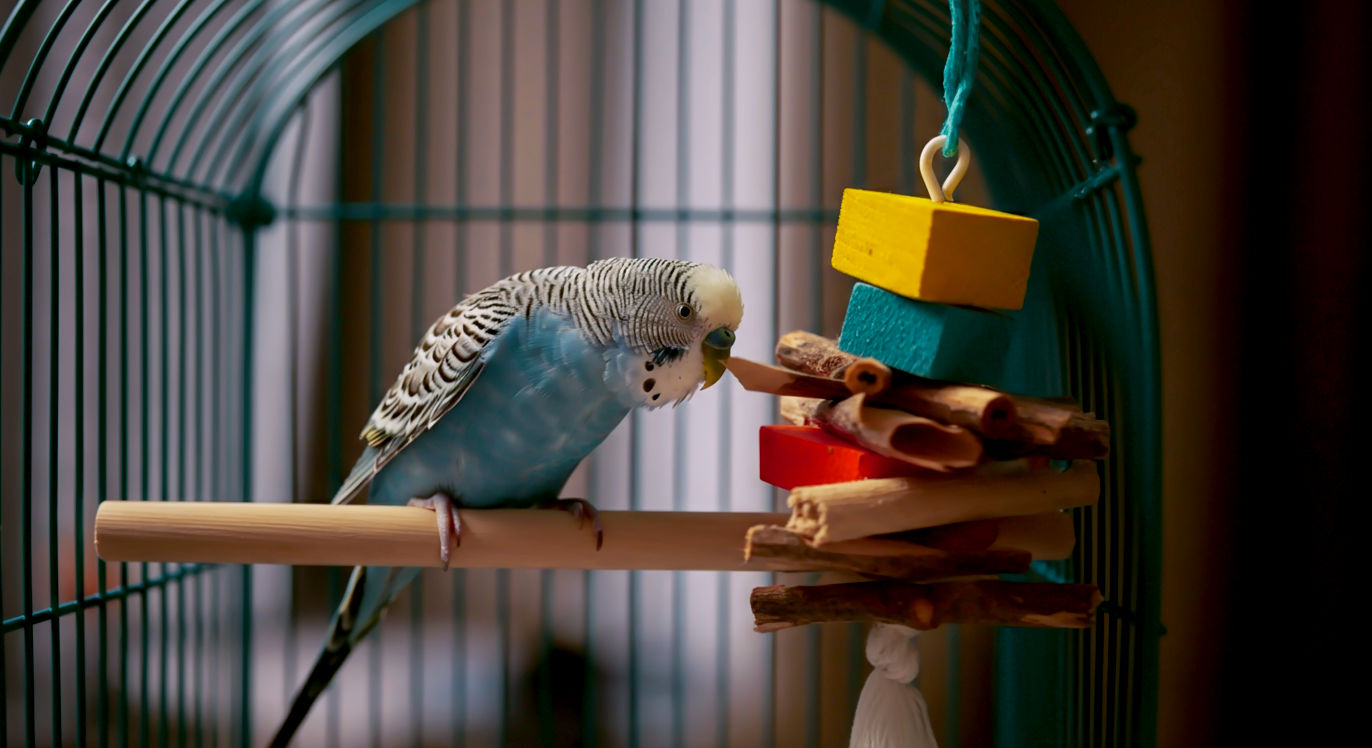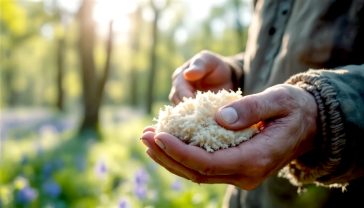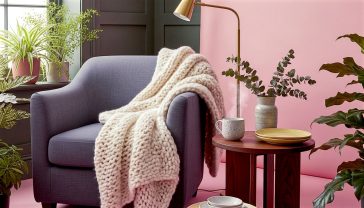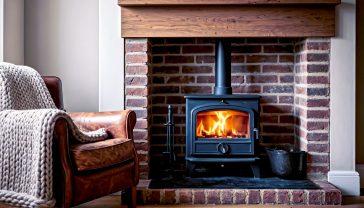The Guide to Bird Cage Accessories: Creating a Perfect Haven for Your Feathered Friend
Your complete guide to choosing the essential accessories for your bird’s cage, from perches and bowls to the best enrichment toys for a happy, healthy pet.

This post may contain affiliate links. If you make a purchase through these links, we may earn a commission at no additional cost to you.
Step into any pet shop in Britain, and you’ll see them: cages of all shapes and sizes, home to everything from the chirpy little budgie to the majestic macaw. For centuries, we Brits have had a soft spot for keeping birds. But bringing a feathered friend into your home is about more than just the cage itself. It’s about creating a world for them—a safe, stimulating, and comfortable environment where they can thrive. And that’s where bird cage accessories come in.
Think of a bird cage as a house. You wouldn’t want to live in an empty house with just a bed and a plate, would you? Of course not. You’d want a comfy sofa, a telly, some books, and things to keep you busy. It’s exactly the same for your bird. The right accessories turn a simple cage into a proper home, a playground, and a sanctuary.
But with so many options out there, from perches and feeders to all sorts of weird and wonderful toys, it can be a bit baffling. How do you know what’s essential and what’s just a gimmick? What’s safe and what could be dangerous? This guide is here to help. We’ll walk you through everything you need to know to pick the perfect accessories for your bird, whether you’ve got a tiny finch or a chatty parrot. We’ll cover the must-haves, the fun extras, and the things you should absolutely avoid, ensuring your pet has the happiest and healthiest life possible.
The Bare Essentials: The Non-Negotiables for Every Bird Cage
Before we get into the exciting world of toys and treats, let’s cover the absolute basics. These are the items every single bird cage must have, no matter the species. They are the foundation of a healthy and safe environment.
Perches: More Than Just a Place to Sit
You might think a perch is just a stick for your bird to stand on, but it’s so much more. In the wild, birds spend their lives on their feet, gripping branches of all shapes, sizes, and textures. This constant variation keeps their foot muscles strong and healthy. If they only have one type of perch in their cage, it’s like you wearing the same pair of shoes every single day—it can lead to sore feet and even serious health problems like arthritis or a condition called bumblefoot.
Why Variety is a Must-Have
The key is to provide a variety of perches. You should aim for at least three or four different types in the cage, placed at different heights. This encourages your bird to move around, explore, and exercise its feet.
- Natural Wood Perches: These are the gold standard. Branches from bird-safe trees like apple, willow, or birch are perfect. Their irregular shapes, twists, and turns mimic what a bird would find in nature, providing excellent exercise for their feet. You can buy them from pet shops, or if you have a safe, pesticide-free tree in your garden, you can even make your own (just be sure to bake the wood in the oven first to kill any bugs).
- Rope Perches: Made from twisted cotton, these are brilliant because you can bend them into different shapes. They are soft and comfortable, giving your bird’s feet a nice break from hard surfaces. They’re especially good for older birds or those with foot problems. Just keep an eye on them—if your bird likes to chew, make sure they aren’t swallowing the fibres.
- Grooming Perches: These have a rough, textured surface, a bit like fine sandpaper. They’re designed to help keep your bird’s nails and beak trim naturally. You shouldn’t make this the main perch, as the rough surface can irritate their feet if they stand on it all day. Place it near the food or water bowl, as they’ll use it frequently but won’t sit on it for hours on end.
What to Avoid: Dowel Perches and Sandpaper Covers
Most cages come with smooth, perfectly round wooden dowel perches. While they’re better than nothing, they are the worst type of perch if used alone. Their uniform shape means your bird’s foot is always in the same position, which can cause serious foot cramps and arthritis. If your cage came with dowel perches, use them as part of a varied setup, but never as the only option.
Similarly, avoid the old-fashioned sandpaper covers that slip over perches. They are far too abrasive and can cause painful sores on the bottom of your bird’s feet. A proper grooming perch is a much safer and more effective option.
Food and Water Bowls: A Place for Daily Bread
This one seems obvious, but there are a few things to consider. Your bird needs constant access to fresh food and clean water. Most cages come with basic plastic bowls, but stainless steel is often a better choice.
- Stainless Steel Bowls: These are the top recommendation from vets. They are non-porous, meaning they don’t harbour bacteria. They’re also incredibly durable (so your clever parrot can’t destroy them) and are very easy to clean and disinfect.
- Ceramic Bowls: These are another good option. They’re heavy, which makes them difficult for birds to tip over. Just make sure they are made with a lead-free glaze.
- Plastic Bowls: While common, plastic bowls can get tiny scratches on the surface over time, which can become breeding grounds for germs. If you use plastic, make sure you clean them thoroughly every day and replace them if they become worn.
Placement is Key
Where you put the bowls matters. Position them high up in the cage and away from any perches directly above them. This is crucial. Birds aren’t fussy about their toilet habits, and you don’t want their droppings contaminating their food and water. Having separate bowls for food and water is also essential to keep the water clean.
Cage Lining: For a Clean and Tidy Home
You’ll need to line the bottom of the cage to catch droppings and spilled food, making daily cleaning much easier. Plain, unprinted newspaper is the cheapest and safest option. Many bird keepers in the UK simply use old copies of The Guardian or The Times. The ink used in newspapers today is generally soy-based and non-toxic.
You can also buy special bird cage paper or sand sheets. Sand sheets have a layer of fine sand stuck to the paper, which some people believe helps with digestion if the bird eats it. However, a healthy bird doesn’t need grit, and some can get an impacted crop from eating too much. Plain paper is perfectly fine and allows you to easily monitor your bird’s droppings—a key indicator of their health.
What Not to Use: Avoid using wood shavings (like cedar or pine), cat litter, or corncob bedding. These can be dusty, leading to respiratory problems, or can cause blockages if your bird eats them. Cedar shavings are particularly toxic to birds.
Beyond the Basics: Enrichment and Fun
Once you’ve got the essentials sorted, it’s time for the fun part! Enrichment is all about keeping your bird’s mind and body active. A bored bird is an unhappy bird, and boredom can lead to behavioural problems like feather plucking and screaming. In the wild, birds spend their days foraging for food, socialising, and exploring. Cage accessories are how we replicate that stimulating environment in our homes.
Toys: The Ultimate Boredom Busters
Toys are not a luxury; they are an absolute necessity, especially for intelligent birds like parrots. Birds are naturally curious and playful creatures. They need things to chew, shred, and investigate.
The Golden Rule: Rotate, Rotate, Rotate!
Don’t just fill the cage with toys and leave them there forever. Your bird will get bored of them, just like a child gets bored of the same old toys. The best strategy is to have a collection of about 10-15 toys and rotate them. Every week, take out a few and put in a few different ones. This keeps things new and exciting.
Types of Toys to Choose From:
- Foraging Toys: These are perhaps the most important type of toy. They make your bird work for its food, mimicking its natural behaviour. You can get puzzle boxes, treat-hiding wheels, or simple skewers where you can thread pieces of fruit and vegetables. This not only keeps them physically active but also engages their brain. You can even make simple foraging toys at home by hiding treats inside a cardboard tube or an egg box.
- Shredding Toys: Birds have a natural instinct to shred and destroy things. It’s how they forage and build nests in the wild. Toys made from bird-safe materials like cardboard, palm leaves, yucca wood, or paper are perfect for this. Giving them something appropriate to destroy will hopefully stop them from chewing on your furniture!
- Chew Toys: These are usually made from tougher materials like natural wood blocks, leather strips (vegetable-tanned only), or hard plastics. They are great for keeping beaks in good condition. Different birds prefer different textures, so you might need to experiment to see what your pet likes.
- Preening Toys: These toys have lots of soft fibres, ropes, or leather strips that mimic the act of preening a mate. They can be very comforting for single birds and can help prevent feather-plucking behaviours.
- Comfort Toys: Some birds, particularly cockatiels and cockatoos, enjoy snuggling up to something soft. A ‘bird buddy’ or a soft fleece tent can provide a sense of security. However, be cautious with these. You must inspect them daily for any loose threads that could trap your bird, and be aware that they can sometimes trigger hormonal behaviour.
Toy Safety: A Serious Business
A dangerous toy can injure or even kill your bird. Always check toys for the following before you buy them:
- Safe Materials: Ensure all parts are made from bird-safe materials. Avoid toys with parts made of soft plastic that can be ingested or metals like lead or zinc, which are toxic. Stainless steel or nickel-plated metal parts are generally safe.
- No Small Gaps: Check for any small rings, clips, or gaps where a bird could get its head, foot, or beak trapped.
- Avoid Jingle Bells: Many bird toys contain small ‘jingle’ type bells. The clapper inside can be easily removed by a strong beak and swallowed, and the open slit of the bell can trap a bird’s beak or toe. If a toy has one, it’s best to remove it with pliers.
Swings and Ladders: Adding Movement and Exercise
Swings and ladders are fantastic for encouraging movement and play. Most birds love to swing; it’s a gentle, relaxing motion. Ladders, whether made of wood, plastic, or rope, provide a great way for your bird to climb and explore different levels of the cage. They help build strength and coordination.
When choosing a swing, make sure it’s the right size for your bird. A budgie will need a much smaller swing than an African Grey. As with perches, a natural wood or rope swing is often more comfortable for their feet than a smooth plastic one.
Baths: For a Clean and Happy Bird
Most birds love a good splash about. Bathing is essential for keeping their feathers in top condition. It helps remove dirt and dust and also encourages preening. A damp bird will meticulously preen each feather back into place, which is vital for feather health.
There are a few ways to offer your bird a bath:
- External Baths: These are little plastic tubs that clip onto the open door of the cage. They’re great because they contain the splashes, but they are only suitable for smaller birds like finches, canaries, and budgies.
- In-Cage Baths: You can simply place a shallow, heavy-bottomed ceramic dish (like a plant saucer) on the floor of the cage. Make sure the water is shallow—no more than an inch or two deep—so there’s no risk of drowning.
- Misting: Some birds, particularly those from rainforest climates like cockatoos and macaws, prefer being misted with a fine spray of lukewarm water. It’s more like the rain they’d experience in the wild.
Offer a bath a few times a week, preferably in the morning so they have plenty of time to dry off before bedtime. Never force a bird to bathe; let them decide when they want to hop in.
Health and Wellbeing Accessories
Beyond the basics and the fun stuff, some accessories play a direct role in your bird’s physical health.
Cuttlebone and Mineral Blocks: Essential for Beaks and Bones
A cuttlebone is a classic and essential item for most small- to medium-sized birds, especially budgies and cockatiels. It’s not actually a bone but the internal shell of a cuttlefish. It provides a fantastic source of calcium and other trace minerals, which are vital for strong bones and healthy egg-laying in female birds. It also serves as a great surface for birds to scrape and trim their beaks on.
Mineral blocks serve a similar purpose. They are made from a mixture of minerals and are often flavoured to entice the bird. They provide a wider range of minerals than cuttlebone alone and are a good addition for all types of birds.
Make sure you have a proper holder to attach the cuttlebone or mineral block to the side of the cage, with the soft side of the cuttlebone facing the bird.
Cage Covers: For a Good Night’s Sleep
Birds need about 10-12 hours of undisturbed sleep every night. In a busy household with lights on and people moving about, this can be difficult. A cage cover is a simple solution. It blocks out light and distractions, signalling to your bird that it’s time to sleep. This helps establish a regular routine, which is very comforting for them.
You can buy specially made cage covers, or a simple dark-coloured sheet or blanket will do the job perfectly. Just make sure it’s made from a breathable material like cotton and that there’s still enough ventilation.
A Note on Cage Size and Setup
It’s worth remembering that all the accessories in the world won’t make up for a cage that’s too small. The cage needs to be large enough for your bird to stretch its wings fully and fly from one perch to another. When you add all the accessories, you need to be careful not to overcrowd it.
Your bird should still have plenty of clear space to move around without bumping into toys or bowls. Think of it as interior design for your bird. The perches should be placed to create clear ‘flyways’ across the cage. Toys should be hung around the edges, not in the middle of the flight path.
The Final Checklist: Creating the Perfect Birdy Paradise
Creating the ideal home for your feathered friend is a rewarding process. By providing a rich and stimulating environment, you’re not just keeping them safe; you’re giving them a life full of joy and activity.
Here’s a quick summary of what to aim for:
- Cage: As big as you can possibly afford and accommodate.
- Perches: At least 3-4 different types, including natural wood and rope.
- Food & Water Bowls: Stainless steel or ceramic, placed high up in the cage.
- Cage Lining: Plain newspaper.
- Toys: A wide variety of foraging, shredding, and chew toys, rotated weekly.
- Enrichment: Swings, ladders, and a bathing area.
- Health: A cuttlebone and/or mineral block.
- Sleep: A breathable cage cover for a regular bedtime.
By thoughtfully choosing the right accessories, you can transform a simple cage into a haven that caters to your bird’s every need. You’ll be rewarded with the delightful sight of a happy, healthy, and playful companion who truly feels at home.
Further Reading & Resources
For those looking to delve deeper into the world of avian care, here are some highly respected British resources:
- The Royal Society for the Protection of Birds (RSPB): While focused on wild birds, their site offers invaluable information on bird behaviour and welfare. https://www.rspb.org.uk/
- The Parrot Society UK: A fantastic charity dedicated to the welfare of parrots in the UK, with detailed care sheets and advice. https://theparrotsocietyuk.org/
- Northern Parrots: A major UK-based supplier of bird accessories, their blog contains lots of useful tips and product guides. https://www.northernparrots.com/






